If Your Starter Is Bad Can You Jump Your Car
As an Amazon Associate I earn from qualifying purchases, at no extra cost to you.
Please check the Affiliate Disclaimer for more information.
Your car was having trouble igniting the engine and now it just can't start when you need it the most. Can you jump start a car with a bad starter after that dreadful moment? Stick with us to know the answer.
Let's dive in so you can understand what's going on.
What is a car starter?
A small motor provides the force that is generated to start the car engine. The power needed to excite that little machine is supplied through the battery. Additionally, there is a relay that resides between the battery and starting motor, transferring the power. Eventually, the engine is started.
A starter's significance is undoubted, as its absence will create a serious obstacle in the car startup. For instance, moving the vehicle from a parking space will be extremely difficult. The rider will need a jump start to run the car.
Nowadays, mechanics are trained well enough in tracing and troubleshooting. If the starter fails to deliver its proper function, many problems can be faced. Firstly, the clicking sound can be heard when the key is rotated.
Moreover, the engine will not start despite the dashboard lights remain alive. Also, several jump start tries will go in vain.
Things to check before jump starting
Safety consideration is of utmost importance before applying jump start to the vehicle. Therefore, the following things should be checked thoroughly:
- Batteries may explode, leak, or release highly flame-catching gases. It is recommended not to use jump starters on such batteries that have a damaged-looking condition;
- The leads are carrying heavy electrical charges, so do not use damaged ones;
- The leads connected for a while may get hot, so stop the current and disconnect them when you feel that temperature increases;
- The engines' moving parts should always be kept clear from any loose or carelessly placed piece of cloth;
- Batteries are delivering heavy currents, so no metallic objects should come near to their terminals. Otherwise, there is a chance of short-circuiting;
- Smoking must be avoided, and any other type of fire or a flame should not be produced near batteries.
Permanently dismantle the leads after stopping the car engine. Doing so while the engine is still running may cause serious harm to the car's electrical wiring or electronics system.
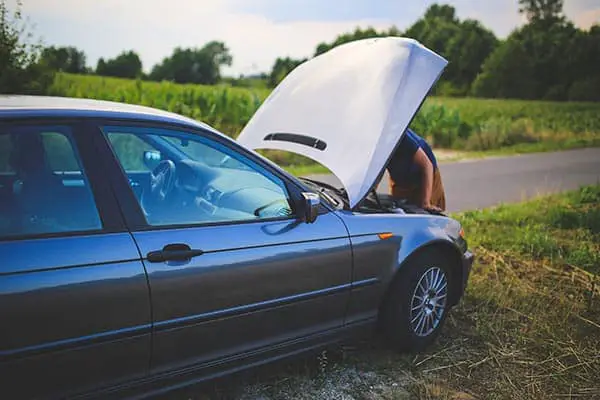
How about using a bad starter for a jump start?
The answer lies somewhat in the middle. Firstly, we have to decide what lies under the jump start definition. According to some people, jump start means getting energy from some other battery by connecting leads. In this case, the result will be zero. Another meaning of jump start is rolling the vehicle to an inclination or slope.
However, the method only helps the cars with a non-automatic transmission. The procedure is simple:
- The car should be in neutral;
- The ignition should be on – generally on position II;
- The car has to be push through a slant by several people;
- The driver should be in his seat when he feels some speed is achieved, and he should apply the second gear (first gear if there's very little space) and try to release the clutch slowly;
- In this case, the movement of the car will be responsible for spinning the engine, starting it.
The method is not recommended for drivers with minimum skills. When the engine starts, it produces quick thrust and needs swift controlling to avoid hitting any object nearby.
Can you jump start a car with a bad starter? Best ways to do it
The car owners face the issue of starting the car with the wrong starter in their lives. Also, the problem is known as a primary fault at automobile repair centers. We have found that by introducing electrically powered cars, the events of bad starter problems have been declined but not completely vanished.
Keeping because of the tale above, it is better to know some tricks in this regard. In the upcoming paragraphs, we will shed light on a set of easy-to-be-followed and straightforward guidelines.
Start by looking at battery connections
Car ignition is controlled by the electric current provided by the battery. First of all, look at the terminals and make sure all the connections are intact and tightly packed.
There are more chances of bad battery-starter problems caused by loose connectivity. Besides, the connection must be secure so that no power wastage can occur during the pathway.
If you found any or both loose, then tighten them with the appropriate tool by looking at the battery terminals. If you feel that connections are proper, look at the as it divides two separate cords, one for the starter and the other for the alternator.
Look for a slack connection by following the cable. If you do not find any irregularity, then bypass this connection and directly connect the battery's positive lead (red cable) for a jump start. After setting up, switch the ignition on.
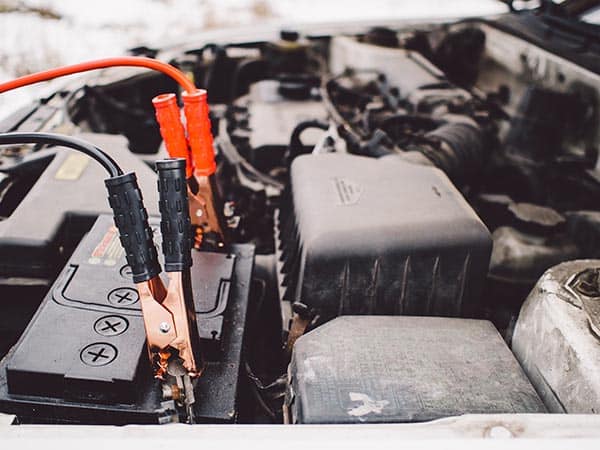
Examination of engine to ground connections
The cable at the base that passes through the starter does not originate from the battery. Instead, it operates with the transmission that passes through the starter's assembly. Moreover, the grounding cables are connected from the car body to the transmission.
Now you have got an idea of the cabling of the car's starter. Therefore, any harm or damage that occurred to the grounding cables will result in a slow and problematic starting under our experience. Consequently, it is advisable to put enough attention transmission cables to get maximum performance output.
To fix the issue, you have to connect a jumper cable through the structure of the taster. This can only be fruitful if you are sure that a bad starting causes the problem.
Examine starter's solenoid cable
The solenoid only supports the starter and its connection with the transmission ring. However, the same can be set to provide optimum functionality on positive and ground wire connections.
If you are getting a cranking sound, then it is the solenoid's fault. The rusting on the solenoid is often why you have an uncontrolled starter when you apply to kick.
Below we will try to explain the problem if a malfunctioning solenoid causes the bad starter problem.
Run a bypass lead over the solenoid cord of the starter. 12V battery is to be inserted between the point of connection of the solenoid and the starter. If you have successfully and accurately connected the lead, a distinguished click sound is heard when the engine is started.
Check for rusting
One of the primary reasons for the jamming of the engine's conductivity is corrosion. So it is worth checking that the contacts are free from any acid flows, as they are a significant cause of producing the rust. Hot boiling water is applied to the terminals to get rid of deposits of acids and rusts.
However, firstly try to remove the rust a little bit by some sharp thing. Apart from battery terminals, engine parts must be checked for any plaque rust and wash it.
Positive cable, solenoid connection, and grounding cables should all be examined and wiped thoroughly.
Punch the starter with a soft hammer strike
Another great and proven conventional method is to softly hit and thump the starter with a hammer. The gentle stroke and cranking of the car should be done simultaneously to get the benefit.
This action is result-oriented as the starter often develops some inactive spots between field coils and the armature. So once you have tapped it, the stopped armature begins to rotate and function again.
The transversal engine is different as it is housing the starter in a difficult location to access and thump. At the same time, the conventional longitudinal engines had this advantage. To help to resolve the situation, we recommend some sleek and lighter tools to strike the starter.
Jump starting a car
If you have the complete toolset for jump starting the car, it is pretty beneficial; especially you have a bad starter. The jump starting of the car is a temporary solution but workable.
All you need is a fully functioning battery to provide adequate amperage for the car's dead battery. This method is also experienced as jump starting delivers enough energy to rotate the starter's armature.
Although this might be a great option, it has its dangers too.
For more information watch this video:
Push startup method
It is another conventional and easy method of starting a car with a bad starter problem. This is referred to as push-start up. This method is proven in the worst scenarios, such as the utterly dead car battery and equally bad starter. The constraint is that this method only works with cars that have manual transmission.
All you have to do is turn the ignition switch on and ask some friends or able people to push the car. If you have a slope nearby, it is far better as less force is needed to start the vehicle.
Once the car attains a speed ranging between 5 – 10 mph, time to release the clutch, the procedure can be repeated if the first attempt goes in vain.
Thoroughly check the engine's flywheel
The engine's flywheel is often the cause behind the bad starter. The flywheel is a visibly large wheel that joints together with the engine and the transmission.
Engine cranking is done by attachment of starter gear with flywheel. The neutral transmission is a result of the detachment of the starter motor.
If you have a tool like a ratchet or a breaker bar, you have to spin the crankshaft by turning the center bolt. Also, you can take help from some guy in this regard. A crankshaft pulley can be seen at the underside of the engine.
Test run the starter motor
A test run is often required and helpful in judging the vehicle's condition after the application of mandatory fixes. This test can be conducted in an auto repair workshop by a mechanic.
It has been observed that some of these shops provide free trial run facilities. The life of the starter motor and its features can be explored.
Some symptoms appear, and you can decide that the starter motor is older like an old and worn shaft, amateur, and brushes, sluggish, or no cranking, the bad transmission of current. So that is why a test run is obvious to judge the motor's condition and whether it needs replacement.
A bad starter in a car is often the result of weak battery handling, non-frequent battery maintenance, and damaged electrical components/connections.
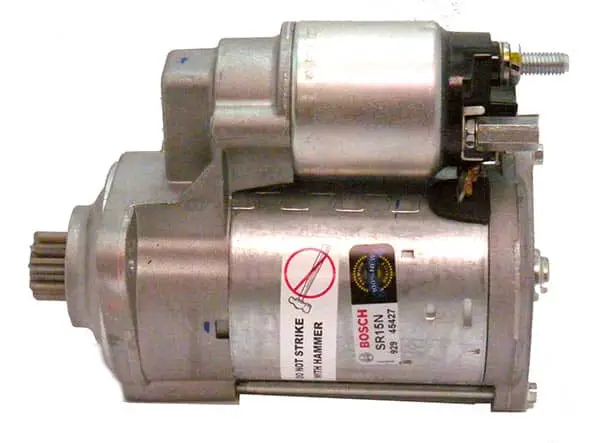
Symptoms of a bad or failing starter
There is no sudden or abrupt failure witnessed with starter motors. However, some symptoms can be considered warnings that tell you about the starter motor's critical condition. These indications must not be taken as lighter.
You should see the garage you trust most and have a complete and thorough inspection of the vehicle. It also came under observation that a bad starter problem is often caused by more than one faulty component.
Grinding noise
A grinding noise is generated when the starter drive gear is worn out and not applying correctly. The same noise can be heard if you by mistake ignite the switch of an already started car. The grinding symptom indicates the problem with the flywheel, and it must not be ignored.
Free wheeling
It is also a sort of noise that appears to be engine cranking noise, and you hear it without cranking the engine. This is caused when the starter is unable to engage with the flywheel. This situation is serious in which whole component has to be replaced. If this occurs, you should service your vehicle immediately.
Sporadic vehicle startup issues
If the engine does not gets started on the first attempt. However, when you turn the ignition key again, it starts. This problem is linked to a faulty relay. The starter relay is a yes or no type device.
It either delivers the maximum current to the starter or else nothing. A damaged relay can be detected with a clicking sound when the key is turned.
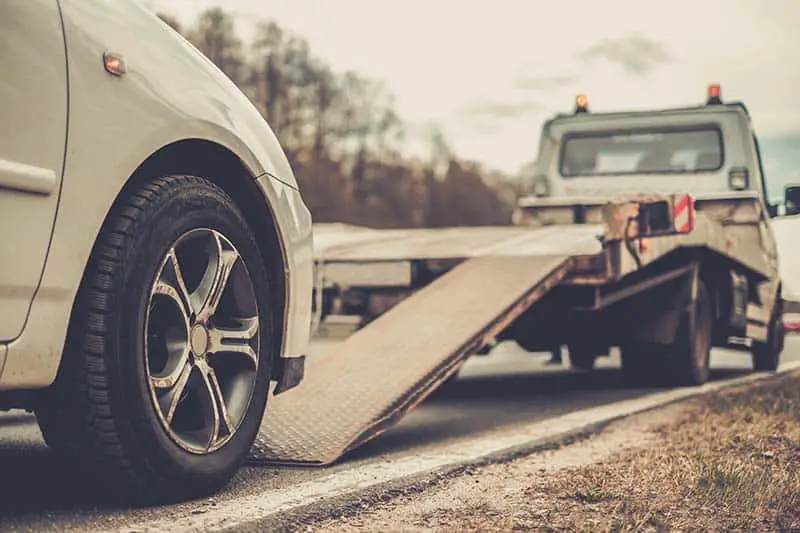
The starter remains on even after the starting of the engine
After releasing the key when the engine is started, the power cuts off to the starter motor and is likely to stop. But there occurs a situation in which it stays on even after the engine is started.
It happens due to the welding of solenoid contacts together in the closed position. The problem should be tackled as soon as possible; else, the relay will remain stuck in one position. The resulting damage occurs to the whole starter system and the engine flywheel.
Smoke
Starter gear is likely to get overheated if continuous power is supplied. Smoke is the indication of too much power is drawn from the electrical supply.
A connection problem or the prolonged periods of continuous operation can be the possible causes. Smoke that is erupting beneath the engine mixed with a burning smell indicates a severe issue.
Batteries
It is often observed that the engine does not start up while other energy dissipaters like lights and dashboard items are turned on. This is pure misleading, as we think that battery is fine, lights are turning on but why not the engine.
At this point, engine cranking requires considerable amounts of battery power much higher than headlights and other consumables. Jump leads are often helpful in the fast-starting of the car in case of a failed battery.
It is observed that 90 percent of cars experience dead battery problems, especially during the winter season.
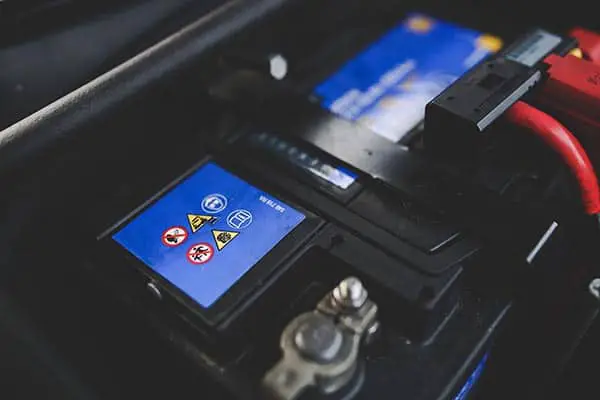
Wrap up
By summing up the above discussion, it is concluded that a car having a jump starter can be started quickly by adopting the techniques mentioned earlier. Also, regular battery checks and proper maintenance help provide a smooth driving experience.
Push starting is also a technique that is quite helpful, and it is proven, but with the limitation, as this method is only suitable for manual transmission vehicles.
For automatic cars, portable jump starters are helpful but with proper handling as per safety instructions. In addition to those mentioned above, one should keep an eye on the indications the vehicle is sending, like smoke, noise, or startup issue.
The minor disruptions associated with the starter may cause some serious damages in the long run. Therefore, proper testing and inspection of the vehicle in trusted automobile workshops or garages is recommended.
Frequently Asked Questions
What is a bad starter?
A vehicle starter is the primary source of power, and the purpose of a starter is to start the engine of the car. A bad starter is a problem linked with the starter itself, the starter solenoid, or the battery. In this case, the engine will not start at all or does not run correctly.
What sound does a bad starter make?
The clicking sound with a faster and slower tempo is the easiest way to detect the faulty starter. Moreover, if the starter is bad, it will continue to make a clicking sound even after it is turned on. It should not try to start the engine when it is already started as per the standard operating procedure.
How to tell if the starter relay is bad?
It is also a common problem that is linked with starter relay. This also creates problems and sometimes wholly stops the engine from starting. Following are the indications through which we can say that the starter relay is faulty:
- The car does not start;
- The starter does not stops after the engine has started;
- Intermittent problems starting the vehicle;
- Clicking sound coming from the starter.
What is jump starting?
The jump starting is often termed a jump boost, and it is utilized when the battery is completely depleted. Another battery or power source is connected across the damaged battery terminals. As a result, the vehicle gets enough energy to start, and then the normal system works.
Can a completely dead battery be jumped?
Generally yes. However, there are rare situations where the battery's degradation is so advanced that it does not let the current flow, hence not being able to accept a jump start procedure.
The active and working batteries from other cars and sources often act as the best way to jump start a dead battery.
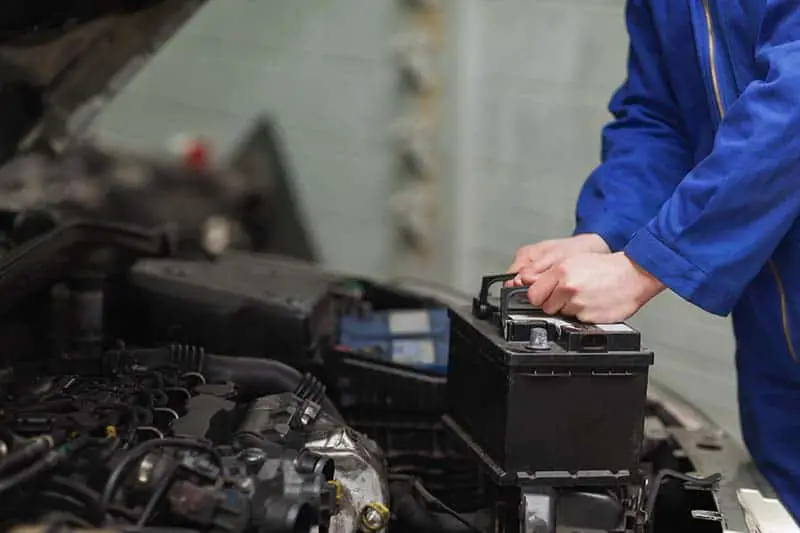
How to properly jump start a car?
Below mentioned steps act as a guide to safely jump start a car:
- Bring out the Jumper cables/leads;
- Place them in the parking area in the park or neutral transmission and switch off both vehicles' ignition. It is safer to apply both parking brakes;
- Carefully attach the positive and negative battery terminal as there are markings on both of them. The red clamp is for positive and black cable for the negative terminal;
- Now start the vehicle with a good battery and remain started for a few minutes.
How long to drive the car after jump start?
If the traffic conditions are normal and optimized, it is better to travel for at least 30 minutes. This is the average time in which the battery can build and hold up some appreciable charge.
How many amps do I need to jump start my car?
For small to medium-sized cars, 400 A in average is usually enough. But when it comes to large vehicles and SUVs such as trucks and cars with more significant engines, then 800 Amperes or mode may be required.
The bigger the engine, the more electrical current is needed to excite and jump start the car.
How does jump start a car without jumper cables?
One of the best adopted methods is the push start. But this is only valid for non-automatic cars. When automatic cars face such a problem, then the only possibility is using a portable battery charger.
Automatic vehicle drivers should carry a portable battery charger with them when going on long journeys. Roadside assistance can also be availed if other techniques fail.
What is portable car starter?
Portable car starters or portable jump starters make use of lithium-ion batteries and help jump start vehicles. They also employ similar techniques like jump starting with other vehicle's batteries.
However, they are different because they do not need another car to provide power to the dead battery.
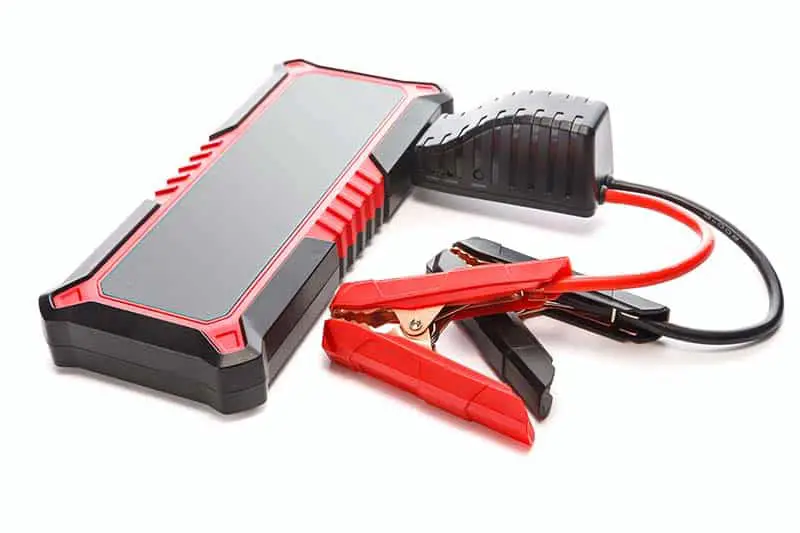
How to use a portable jump starter?
Following are the essential items that are required when using the jump starter.
- Protective clothing;
- Eye protection;
- Car battery;
- Owner's manual;
- Portable jump starter;
- Jumper cables (sometimes they are permanently connected).
Are portable jump starters worth it?
Yes, it is recommended to have a portable jump starter inside your car. However, if you want to use the jump starter, make sure that the battery is tested and inspected. As nowadays, with the modern electrical system, it is very unlikely that the battery becomes dead.
Can you jump start a car through cigarette lighter?
There are some cigarette lighter jump starters available on the market, although generally they are useless to immediately start a car with a completely dead battery. In order to start a dead car battery, the vehicle will need a huge amount of electrical current. The car with the dead battery draws a tremendous amount of amperage from the car with the good battery.
Cigarette lighter circuits are typically fused at 10A when you'll usually need around 350A or more to crank the engine.
If you car's battery isn't completely discharged, and only in this occasion, a cigarette lighter jump starter may help if you leave it connected at least for some minutes, as it will feed your battery with some juice that may be enough to start the engine.
Other related articles that may be interesting for you:

If Your Starter Is Bad Can You Jump Your Car
Source: https://turbogadgetreviews.com/can-you-jump-start-a-car-with-a-bad-starter/
0 Response to "If Your Starter Is Bad Can You Jump Your Car"
Post a Comment